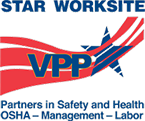 Recently, we noticed a story in a leading safety and health magazine that questions the “two-piece, pass-through buckle” that is commonly used on many harnesses. The author, in fact, referred to it as a design flaw. However, we consider it more a matter of improper use than a design flaw. While he does identify some potential user failures, we feel his terming is not quite accurate. Here’s why...
Recently, we noticed a story in a leading safety and health magazine that questions the “two-piece, pass-through buckle” that is commonly used on many harnesses. The author, in fact, referred to it as a design flaw. However, we consider it more a matter of improper use than a design flaw. While he does identify some potential user failures, we feel his terming is not quite accurate. Here’s why...
As with any life support equipment, it is imperative to use the equipment in accordance with the manufacturer’s instructions for use and receive the appropriate training as required. The author cites instances where he has observed the mating plate of the two-piece, pass-through buckle being improperly oriented which can lead to the buckle loosening and potentially disconnecting. He also suggests that the pass-through plate have some type of “visual indicator” to warn the user when the buckle is improperly connected. Of course, we’re always in favor of additional safety features!
While this may be viewed as a matter of semantics, consider the following analogy… almost every outboard motorboat has one or sometimes multiple drain plugs in the transom well to provide drainage once the boat is pulled out of the water. If the skipper forgets to re-install the drain plugs the next time the boat is launched, the transom well will fill with water, which could lead to swamping. So, is this a design flaw, or improper use? From an equipment designer/manufacturer’s point of view, the use of this terminology could be very significant.
With the many advances in life safety equipment, we have seen harnesses and other rescue/safety equipment become more convenient, lighter, multifunctional, and overall safer than earlier generations. As with many product advances and improvements, there may be compromise in one area but advances in many others. In this case, the speed and ease of donning and doffing a Class III rescue or fall protection harness by using some type of quick-connect buckle. Of course, the user must ensure that the buckle is used correctly.
The pass-through buckle has been around a very long time. In fact, a Croll sport climbing sit harness that I bought in 1981 had this type buckle. These buckles were also used in the past on the leg loops on Roco harnesses. There are minor variations on the design of the buckle with some having slots to ease the pass-through of the top plate, while others do not have this slot.
There are important requirements for the safe use of these buckles, which include:
- Make sure the buckle is adjusted tightly enough to ensure constant tension is applied to the top plate against the fixed plate.
- Be sure that the top plate is not inverted.
- Double check that the tail end of the webbing does not pass through the “fixed plate” but instead lays parallel with the anchored section of the webbing.
These three user points of performance are easily completed. Our extensive experience with this type of buckle tells us that it’s a convenient and safe buckle when used as it was designed. As always, carefully check and re-check your gear before life-loading!
Information from article by Robert Peterson published by OH&S Online - www.ohsonline.com.
Additional Resources
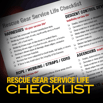
Gear Inspection Checklist (download)
How often should I replace my rescue harness?

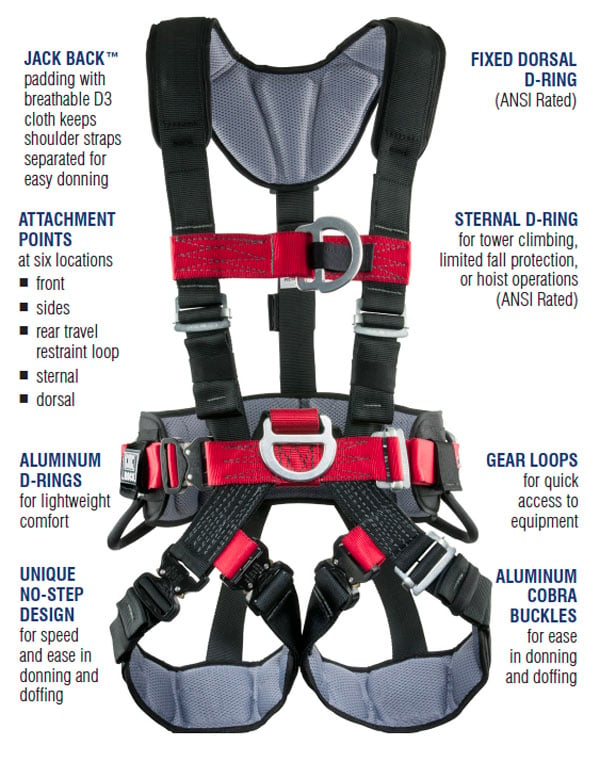
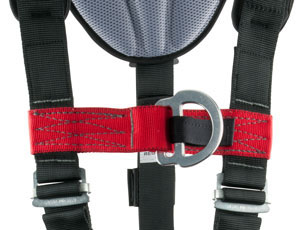 Tower climbers will benefit from the vertical orientation of the sternal D-Ring, which eliminates binding of ladder safety system cable grabs during down climbs. The sternal D-Ring has a quick release stowage strap that keeps the ring tucked neatly against the chest when not in use.
Tower climbers will benefit from the vertical orientation of the sternal D-Ring, which eliminates binding of ladder safety system cable grabs during down climbs. The sternal D-Ring has a quick release stowage strap that keeps the ring tucked neatly against the chest when not in use.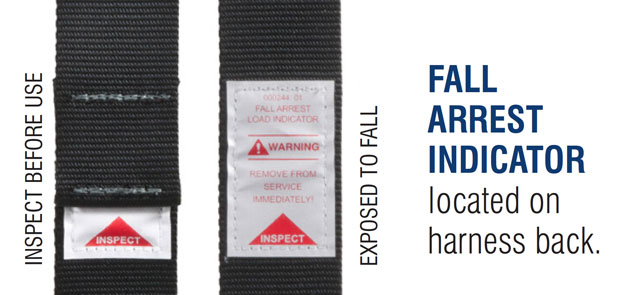 The Fall Arrest Indicator is another great safety feature available on this harness. The visual on the tag alerts the user if the harness has had a previous fall.
The Fall Arrest Indicator is another great safety feature available on this harness. The visual on the tag alerts the user if the harness has had a previous fall. 
 Roco’s new Hierarchy of Fall Protection Safety Poster provides guidance on how to protect your workers from fall hazards by illustrating a series of steps in making safer choices as job duties are approached. It clearly explains the need for employers to make every attempt to abate fall hazards at their work sites by starting with the most protective level of fall protection. OSHA and ANSI references are used to emphasize the need for proper training and “fallen or isolated worker-at-height” rescue pre-plans when appropriate.
Roco’s new Hierarchy of Fall Protection Safety Poster provides guidance on how to protect your workers from fall hazards by illustrating a series of steps in making safer choices as job duties are approached. It clearly explains the need for employers to make every attempt to abate fall hazards at their work sites by starting with the most protective level of fall protection. OSHA and ANSI references are used to emphasize the need for proper training and “fallen or isolated worker-at-height” rescue pre-plans when appropriate. 
 New Roco Fall Pro Course: Competent Person - Train the Trainer:
New Roco Fall Pro Course: Competent Person - Train the Trainer:


